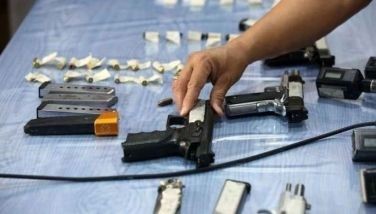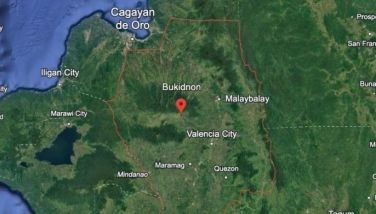Atienza: There’s still so much to dismantle in Laguna Lake
Environment and Natural Resources Secretary Lito Atienza yesterday prodded Laguna Lake Development Authority (LLDA) general manager Edgar Manda to “do more” in dismantling fish pens and fish cages in Laguna de Bay, the country’s largest lake.
This, as he noted that there “is still so much to dismantle in the lake,” apart from the illegal structures that the LLDA demolished in a 200-hectare area last April 23.
“I am not satisfied, based on the report of our monitoring… just from the glaring irregularities, madami pang nakatago dyan (many more are concealed there),” he said.
At the same time, Atienza ordered the National Mapping and Resource Information Authority to take overview shots of Laguna de Bay and help the LLDA have an “accurate picture of the problem.”
He said he would even invite Manda to join him in a helicopter ride for an inspection of the lake, so the LLDA head would have the precise appreciation of the crowded and sorry state of the lake.
Atienza vowed to monitor the LLDA until fish pens and fish cages in Laguna de Bay “are reduced to a permissible level.”
Of the 90,000-hectare total area of the lake, the LLDA said fish pens and fish cages occupy 15,000 hectares, breaching the lake’s carrying capacity and greatly contributing to its rapid deterioration.
Based on Atienza’s calculation, 60 percent of the lake is covered with fish pens and fish cages, when the legal, allowable level should not be more than 10 percent.
“The fish pens are already choking the lake to death,” he said.
Last March, Atienza ordered the demolition of 90 percent of the illegal structures to revive the old glory of Laguna de Bay.
“Based on my personal ocular inspection, around 30,000 hectares should be rid of illegal structures, as opposed to what the LLDA is claiming, which is only about 2,000 hectares,” he said.
“I am giving LLDA general manager Manda (the opportunity) to do the job. If they can’t, we will do it,” he added.
In 1983, the LLDA crafted the Fishery Zoning and Management Plan (ZOMAP) for Laguna de Bay to rationalize the management and regulate the utilization of the lake’s fishery resources, as well as to resolve equity problems among large-scale fish pen operators and small-scale fishermen dependent on the lake.
In June 1996, then President Fidel Ramos approved the LLDA’s ZOMAP, which also considered the lake’s carrying capacity for aquaculture, its function as a transport route, and the factors affecting sediment transport and distribution of food nutrients within its ecosystem.
The ZOMAP also defined the layout and provided the guidelines for the proper allocation of aquaculture structures within the lake.
Under the ZOMAP, areas were allotted for fish pens, fish cages, fish sanctuaries and open fishing. Navigational lanes and barangay access lanes were also pinpointed to facilitate the movement of people, goods and services within the lake.
Specifically, the ZOMAP allocated 10,000 hectares for the fish pen belt, and 5,000 more for the fish cage belt.
But the LLDA said fish pens currently occupy an estimated 12,000 hectares, and fish cages, nearly 2,000 hectares.
- Latest
- Trending






























